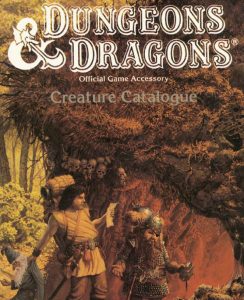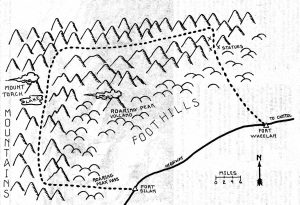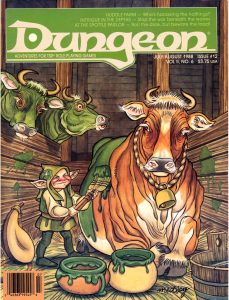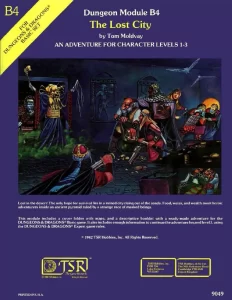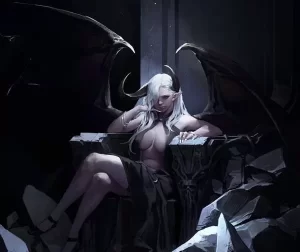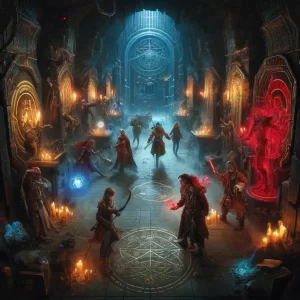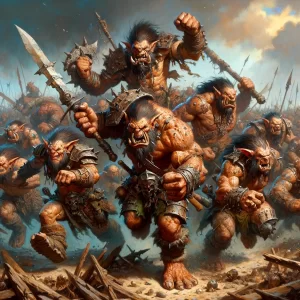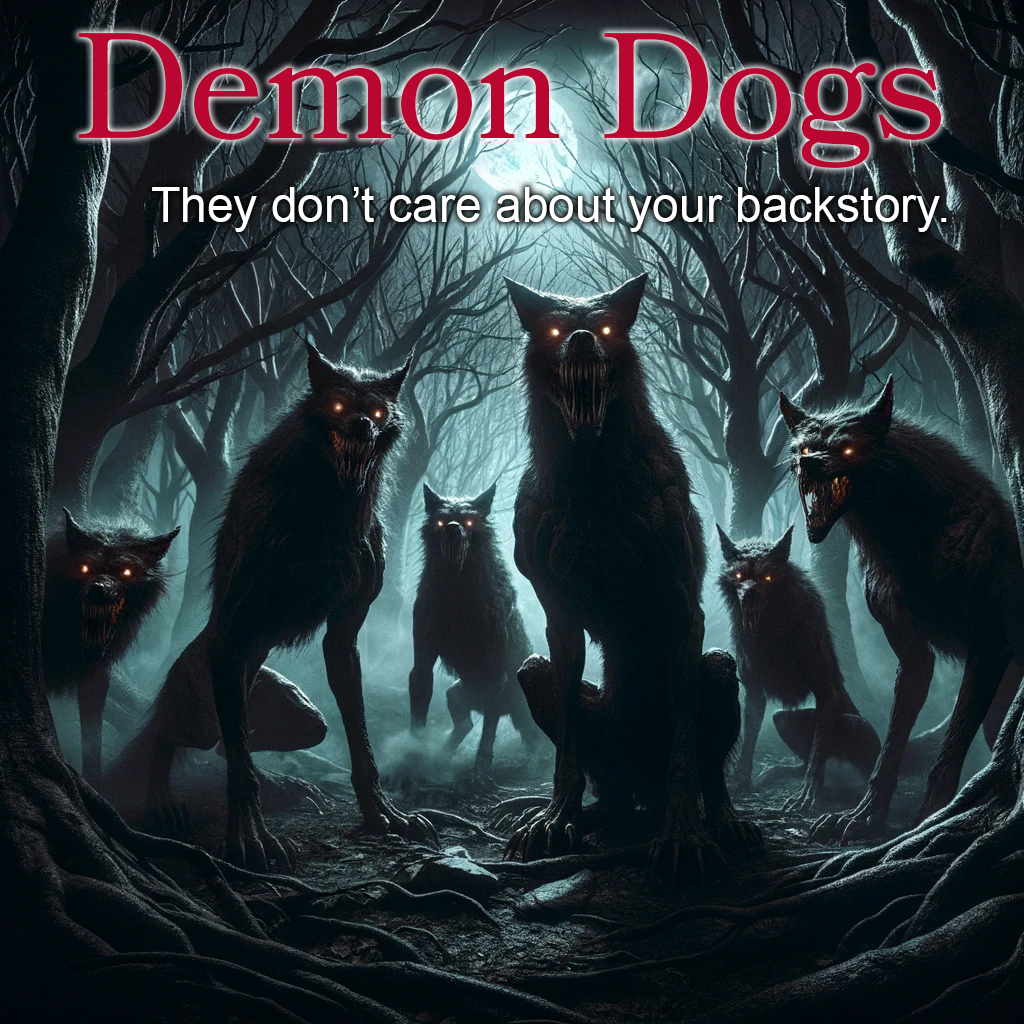
Origins and Mythology
Demon dogs, creatures of malevolent spirit and terrifying form, emerge from the darkest corners of mythology and folklore. These spectral canines are not mere animals but are often considered omens of death, disaster, or profound misfortune. Found across various cultures, these entities share a common thread in their narratives-they are harbingers of the supernatural, intertwining with the human world only to forewarn or unleash calamity.
In British folklore, the Black Shuck is a notorious demon dog, roaming the coasts of East Anglia. With its glowing red eyes and shaggy coat, it is said to be so fearsome that a single encounter could lead to death within a year. Similarly, in North American legends, particularly among the native tribes, stories of ghostly dogs often accompany burial sites and spiritual locations, guarding the threshold between the living and the spirit worlds.
Characteristics and Appearances
Demon dogs are typically depicted as larger than the average canine, with some tales describing them as big as a calf. Their fur, usually matted and dark as the void, conceals eyes that burn with an eerie, often red or yellow, luminescence. These spectral beasts are said to move silently despite their size, capable of appearing and vanishing in the blink of an eye.
Their howls are another signature trait-low, mournful, and resonating through the chill of night like a wind that carries doom. Those who hear it are often struck with an inexplicable dread, a primal warning of the unnatural presence these creatures embody.
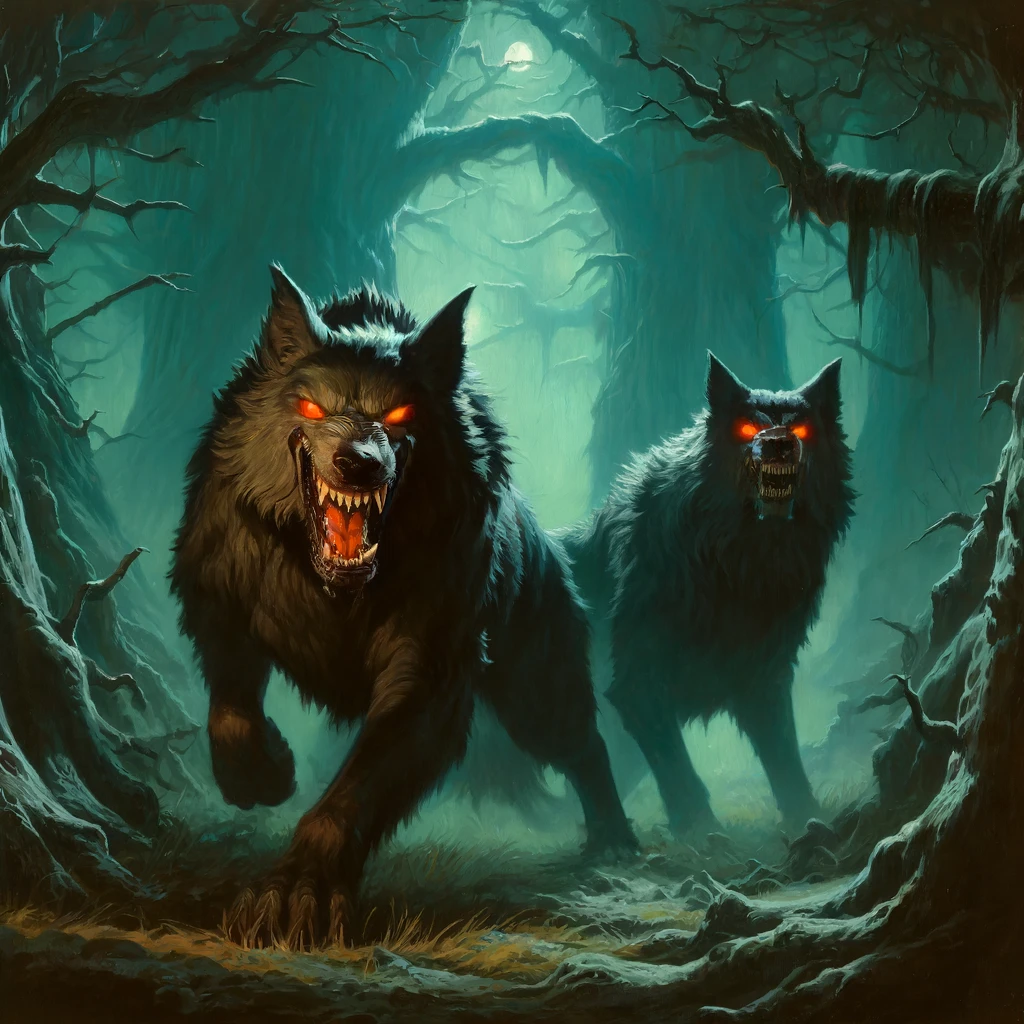
Encounters and Lore
Encounters with demon dogs are often personal and marked by a chilling intimacy. They appear at crossroads, lonely roads late at night, or even outside one's window during stormy evenings. According to folklore, meeting a demon dog's gaze could be an omen of imminent death or, in some tales, a curse that dooms one to a fate worse than death.
Historical accounts, often documented by chroniclers of the supernatural, describe encounters that have left entire villages in dread. These stories typically conclude with a mysterious death or a series of misfortunes befalling those who witnessed the beast.
Cultural Impact
The myth of the demon dog has seeped into popular culture and literature, inspiring a genre of horror that explores the boundaries between the known world and that of spirits. From Gothic novels to modern horror films, the archetype of the demon dog serves as a potent symbol of fear, used to evoke the deepest, most instinctual fears lurking in human hearts.
In art, demon dogs are often portrayed amidst scenes of desolation or foreboding landscapes, enhancing their association with doom and gloom. Their imagery serves as a powerful reminder of the ancient, often untold, stories that have traveled through generations, warning of the thin veil that separates our world from the darker realms.
Demon dogs remain a captivating subject within the supernatural folklore, embodying the essence of ancient fears and the human fascination with the afterlife and the unknown. Whether seen as protectors of the supernatural or heralds of doom, their stories continue to be a haunting reminder of the mysteries that may lie beyond the shadows.
